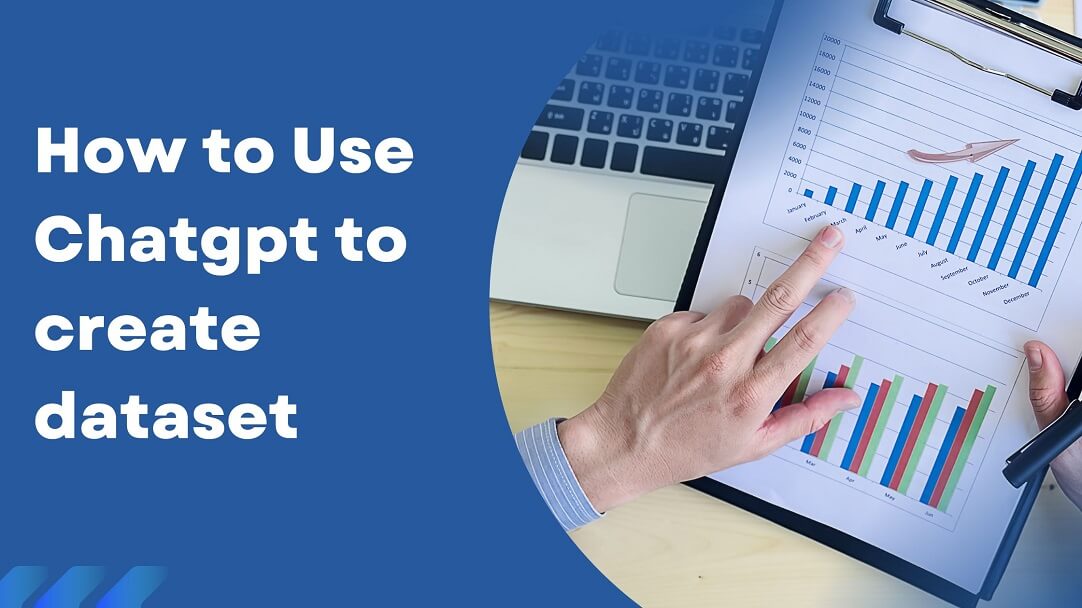Last Updated on August 3, 2023 by Bestusefultips
ChatGPT’s advanced language generation capabilities make it an excellent option for building an ideal dataset for machine learning or natural language processing. In this post, we’ll examine how to use ChatGPT to create (Generate) a dataset that can be used to drive your AI models and provide you with a comparative benefit in your business.
Unfortunately, this has generated unpredictable consequences, such as student cheating on schoolwork and assessments, using ChatGPT to submit research papers, and even hackers using these models to mislead others. To solve these problems, there is a growing market for models that can identify text created by GPT models (GPT 3, GPT 4). The availability of a massive database of human-written and GPT-generated answers is one of the essential requirements for developing strong algorithms for detecting GPT-generated text.
What do you mean by Dataset?
A dataset comprises structured or unorganized information collected according to a particular analysis or research method. It can include various data formats, such as text, photos, audio, video, and quantitative information.
Datasets are helpful in various industries, including business, healthcare, education, and related fields. For example, databases may be employed in healthcare to investigate patient information to enhance healthcare results. Datasets can be applied in companies to understand consumer and market dynamics more fully. It is essential to ensure that datasets are trustworthy, precise, and relevant to the community under study. Datasets can be developed in various methods, including surveys, trials, and website data crawling. Actual data providers, such as government entities or academic groups, can also be used to organize datasets.
Datasets must always be properly labeled and documented to offer meaning and purpose. They have to be organized in a manner that allows them to be read by analytical techniques, including statistical software or algorithms for machine learning.
Read More: Chatgpt defining rules for DSL
What is the ChatGPT Dataset Training Process?
ChatGPT is a strong verbal communication model that can generate superior text data for various uses. But how is ChatGPT’s dataset trained?
ChatGPT is developed using an autonomous learning technique, which means it understands data without even being originally proposed what to understand. It is created using a process known as transformer-based language modeling on a wide collection of text data, such as books, papers, and pages.
ChatGPT examines the text information and uses analytical methods to find connections and links between words and phrases during retraining. As a result, it can produce a new language that is functionally identical to the initial data. The model is developed repeatedly, which indicates that it is trained multiple times with different parameters and evaluation metrics until it achieves high precision and efficiency. After training, the model can be perfectly alright for specific tasks like text categorization or translation.
The training process for ChatGPT involves analyzing vast quantities of text data, discovering relationships and patterns, and employing statistical techniques to produce new text semantically identical to the Chatgpt training data. ChatGPT can now produce higher text data suitable for use in several ways.
Some Of The Important Benefits that can be easily used to Create the Dataset
There are numerous advantages to using ChatGPT to develop datasets for enterprises that require massive quantities of excellent data for machine learning applications. Following are a few of the enormous benefits:
Time and money savings: Collecting and analyzing data can be time-consuming and costly. ChatGPT, on the other hand, can provide enormous quantities of information quickly without any human intervention, saving enterprises both money and time.
Reliability and Accuracy: There’s always the potential for error by humans or biases when producing data manually. ChatGPT, as an AI language model, makes data with great accuracy and consistency, rendering it excellent for applications requiring precision.
Flexibility: ChatGPT may be learned on any data and produced in a wide range of formats, providing it responsive to the needs of various industries and machine learning applications.
Connectivity: When the amount of data demanded by machine learning applications develops, ChatGPT can rapidly expand to provide as much information as necessary without additional support or equipment.
ChatGPT is an interactive language model that increases with time as it is learned with new data. As a corollary, the integrity of the datasets it produces will only grow over time, providing customers with more precise and pertinent data for their operating model.
Companies may achieve a significant industry edge by embracing these advantages and constructing more precise and efficient machine-learning models.
How to Use Chatgpt to Create a Dataset
If you need text data for investigation or analytics, ChatGPT, an OpenAI-trained language model, may assist you in producing it swiftly and effectively.
- Establish your questions about the study or topic: Before generating a dataset, you must determine the scope of your inquiry issue or subject. This will support you in collecting appropriate and significant text data for your study.
- Pick a good language model and characteristics: ChatGPT contains multiple pre-trained language models based on your objectives. You can also personalize your production by changing the parameters such as duration, temperature, and repetition penalties.
- Create text data: After you’ve specified your language model and parameters, you should start building text data. Start typing in a prompt linked to your research problem or subject matter, and ChatGPT will generate text and use its data for training.
- Dataset categorize: After you have collected text data, you must categorize and label it in a way that will be valuable for your evaluation. Adding tags, groups, or inscriptions to each data point is one approach.
- Prepare the dataset: Prepare a dataset acceptable to your analysis techniques. One possibility is exporting the dataset to a spreadsheet, CSV file, or JSON format.
Conclusion:
Finally, businesses use ChatGPT to produce massive datasets for their machine-learning applications. Businesses could produce huge amounts of meaningful information with little resource and time investment by collecting initial questions, fine-tuning the ChatGPT model, collecting answers, filtering and purifying those responses, and structuring the dataset.
It is essential to remember that the caliber of the seed queries and the fine-tuning method will determine the validity of the dataset. Human monitoring and validation are still necessary to guarantee that the generated responses are precise and pertinent.
ChatGPT provides companies with a quick and inexpensive solution to produce significant datasets for their machine-learning models. As AI and machine learning are becoming more essential in manufacturing sectors, the usage of ChatGPT to generate datasets is expected to grow more common.
Read More: Best ChatGPT AI
FAQs:
Can ChatGPT generate datasets in any language?
You can use ChatGPT to develop datasets for any language with proper training data.
Do I require programming experience to leverage ChatGPT to produce datasets?
No, you don’t require programming expertise to generate datasets with ChatGPT. There is a multitude of user-friendly tools and platforms that enable you to create datasets using ChatGPT without being to code.



